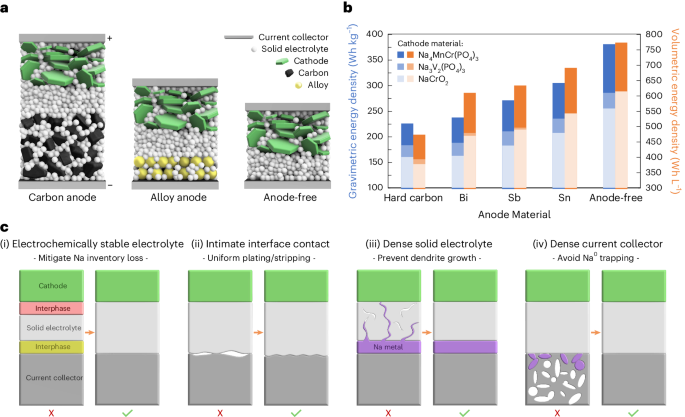UChicago Pritzker Molecular Engineering Prof. Y. Shirley Meng’s Laboratory for Energy Storage and Conversion has created the world’s first anode-free sodium solid-state battery.
With this research, the LESC – a collaboration between the UChicago Pritzker School of Molecular Engineering and the University of California San Diego’s Aiiso Yufeng Li Family Department of Chemical and Nano Engineering – has brought the reality of inexpensive, fast-charging, high-capacity batteries for electric vehicles and grid storage closer than ever.
“Although there have been previous sodium, solid-state, and anode-free batteries, no one has been able to successfully combine these three ideas until now,” said UC San Diego PhD candidate Grayson Deysher, first author of a new paper outlining the team’s work.
The paper, published today in Nature Energy, demonstrates a new sodium battery architecture with stable cycling for several hundred cycles. By removing the anode and using inexpensive, abundant sodium instead of lithium, this new form of battery will be more affordable and environmentally friendly to produce. Through its innovative solid-state design, the battery also will be safe and powerful.
This work is both an advance in the science and a necessary step to fill the battery scaling gap needed to transition the world economy off of fossil fuels.



Sounds promising, but we need Wh/kg and W/kg numbers to see if the performance is any good.
And $/Wh.
That number is not going to be accurate what so ever for a product that’s not even commercialized yet…
In theory this should be cheaper to manufacture as it eliminates making and assembling the anode and it is made of much cheaper and abundant materials compared to standard lithium ion batteries.
Even if it’s the super amazing thing with no caveats, I suspect it will take at least 5years to get to market and probably 10 to really get to scale.
Dr. Meng is the real deal. With her name on it, it’s definitely not not to be written off as vaporware. This is super exciting :)
If I’m reading figure 1b from the pre per review paper correctly, it looks like they might be very good. But I didn’t see any actual measurements in the paper.
Yeah, with articles about batteries the attributes they don’t talk about are usually pretty bad.
They mention low cost high energy density and fast charging, (which are the big three) but they don’t give test numbers for any of them.
That trio probably means it’s heavy, but for many applications that’s a minimal issue.
Energy density can mean gravimetric (weight) or volumetric (size) sorry should have clarified.
Number of charge cycles it can take is a biggie as well.
Last time the subject of sodium batteries came up, someone mentioned that the application for them makes that less important that it otherwise would be. Again, this is second hand, so take it with a grain of salt, but for the kind of mass storage they’re intended for, they can be less capable than lithium batteries and still be a better choice, if they’re designed right.
I normally don’t like horning in with second hand crap, and I can’t find the post, but it made sense the way it was explained. The sodium batteries would be used for storage from solar or other power generation, and that allows for less efficiency being needed since it will scale better in terms of being able to have enough of them on demand compared to lithium batteries.
Again, please anyone reading this, don’t take it as a truth, it’s just a casual, unverified statement of what someone else said, done for the sake of conversation.